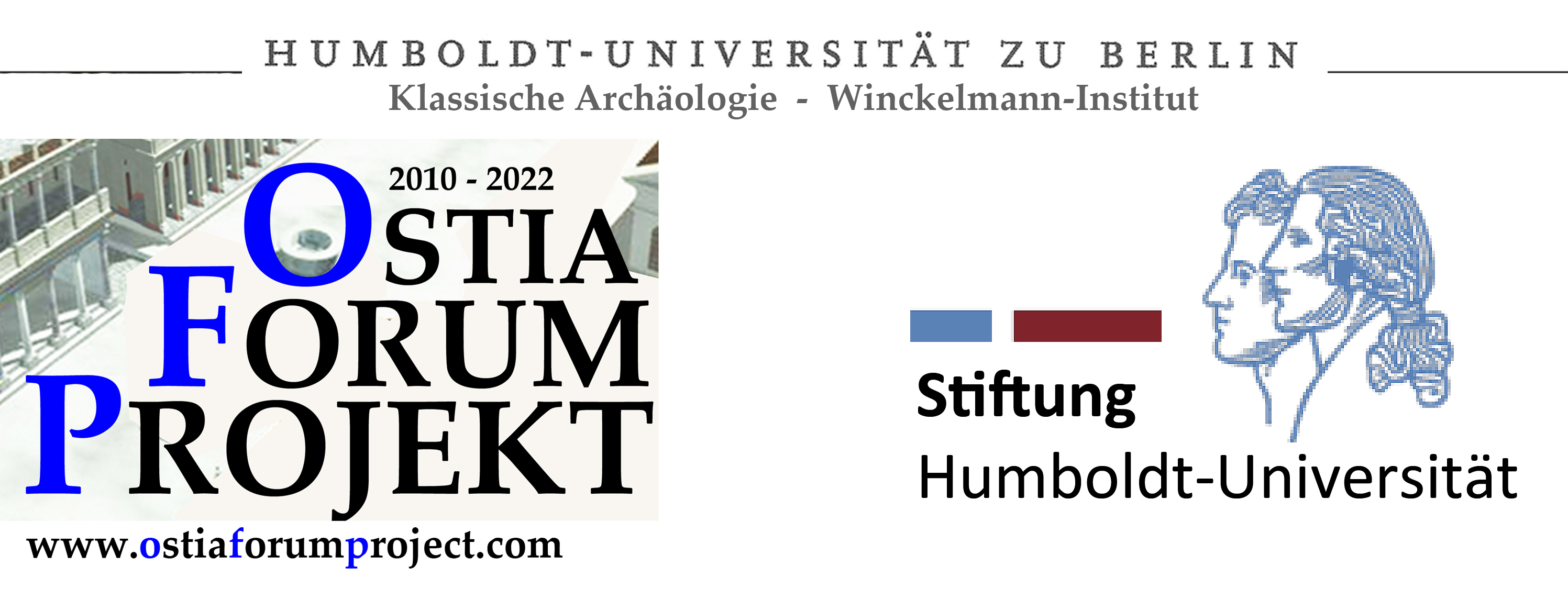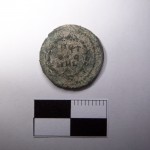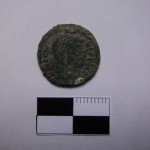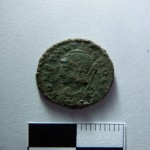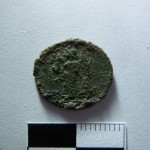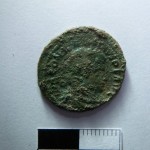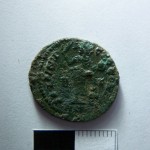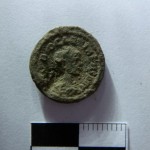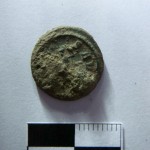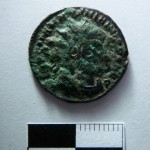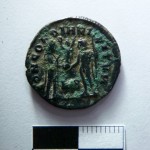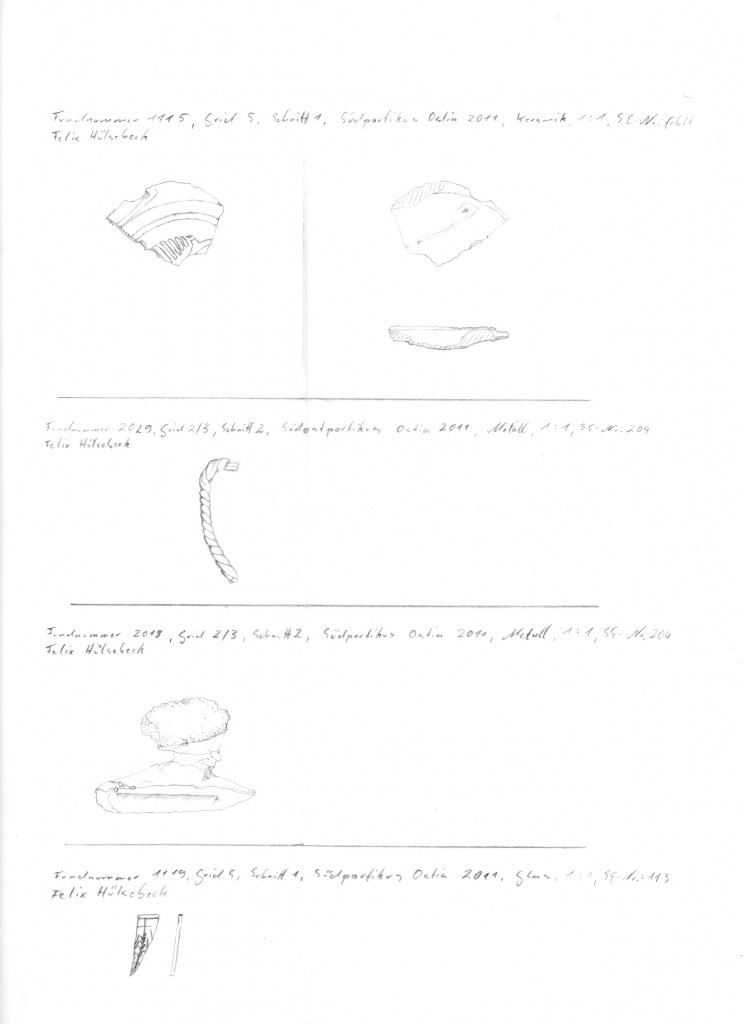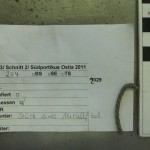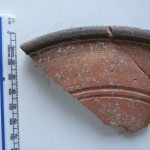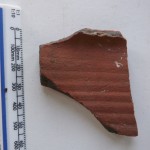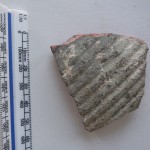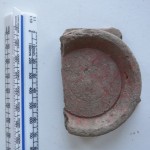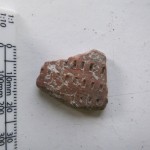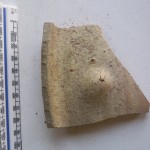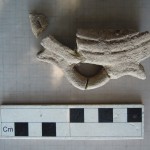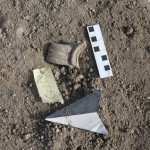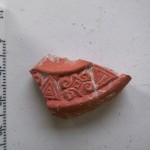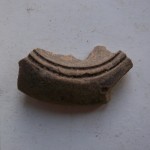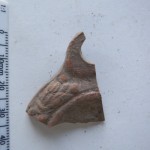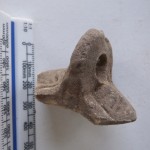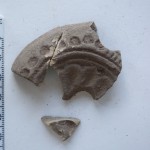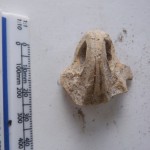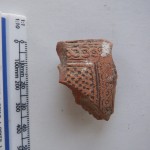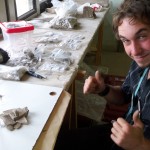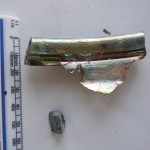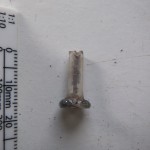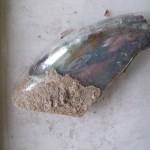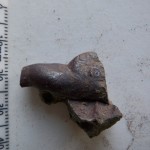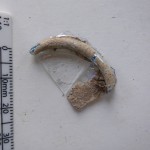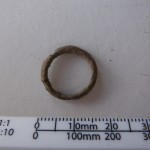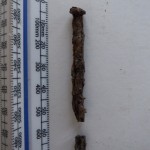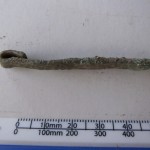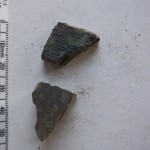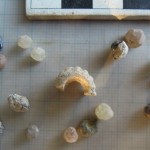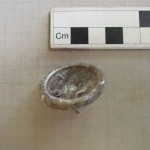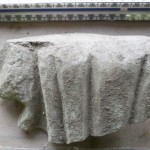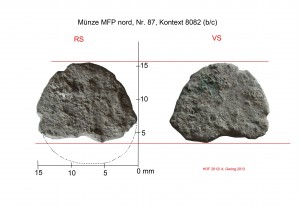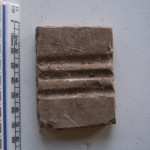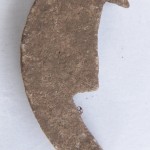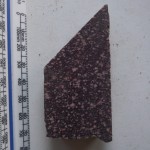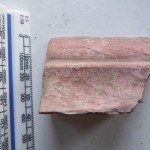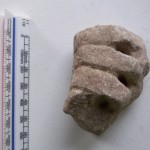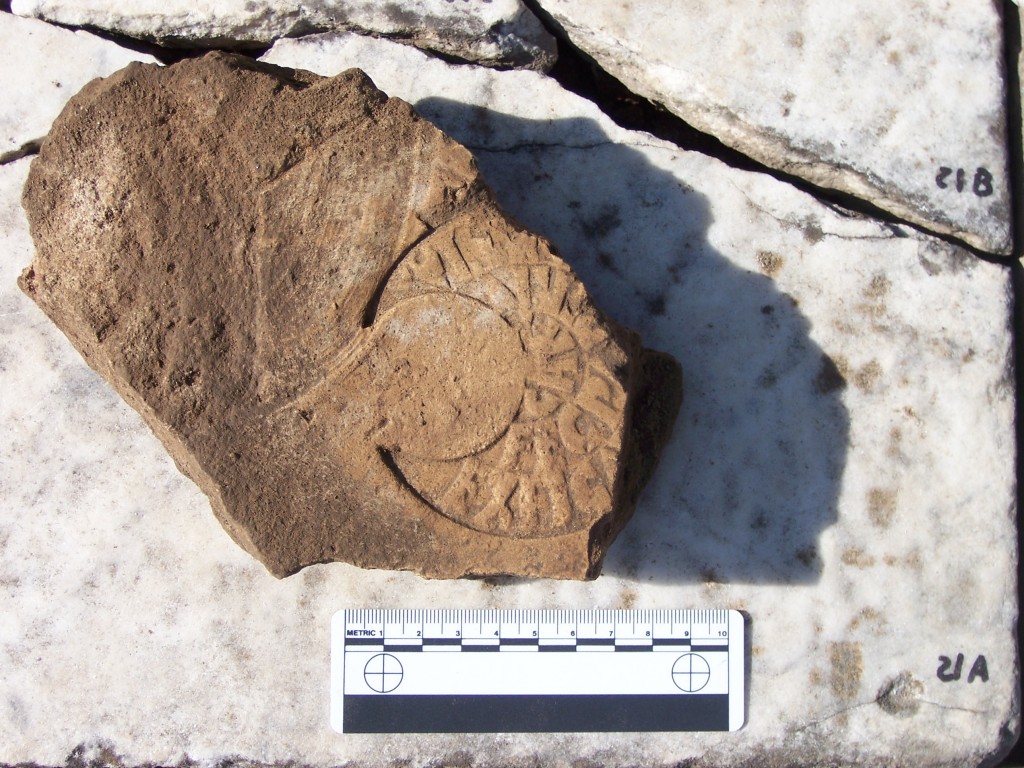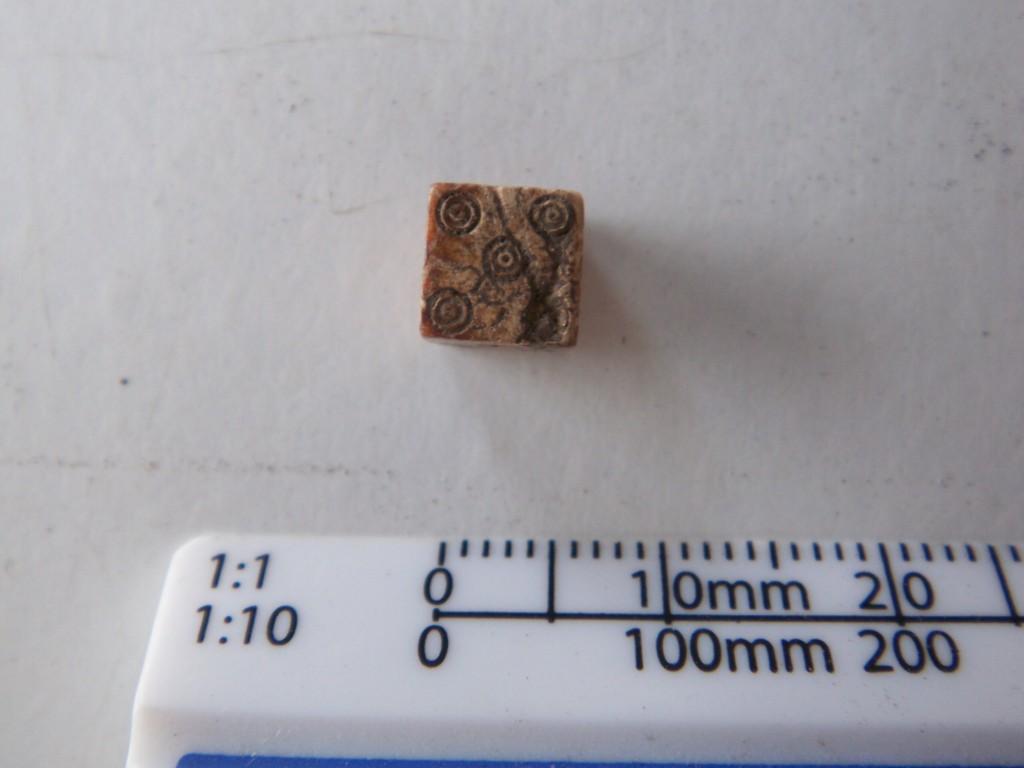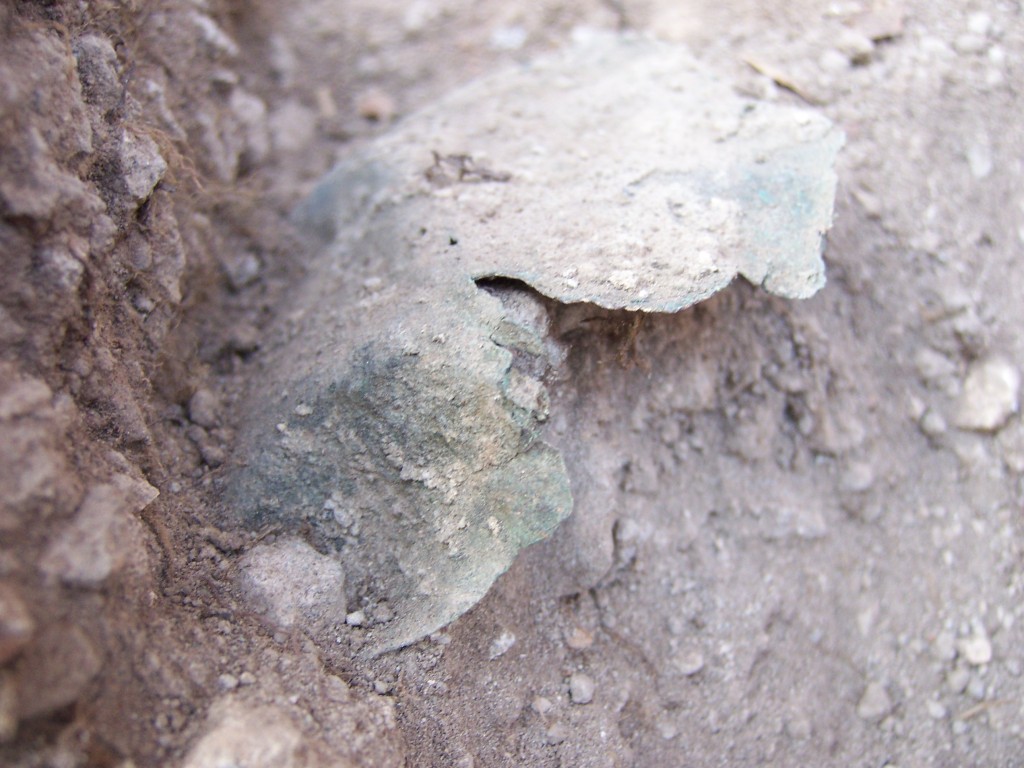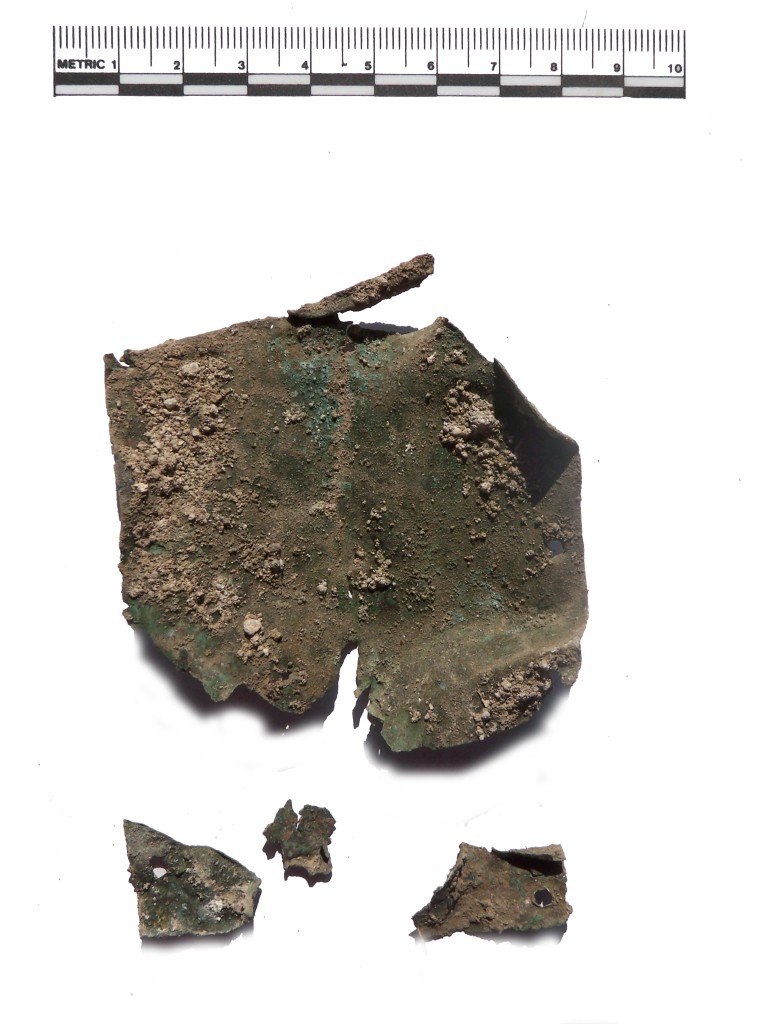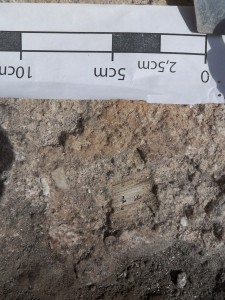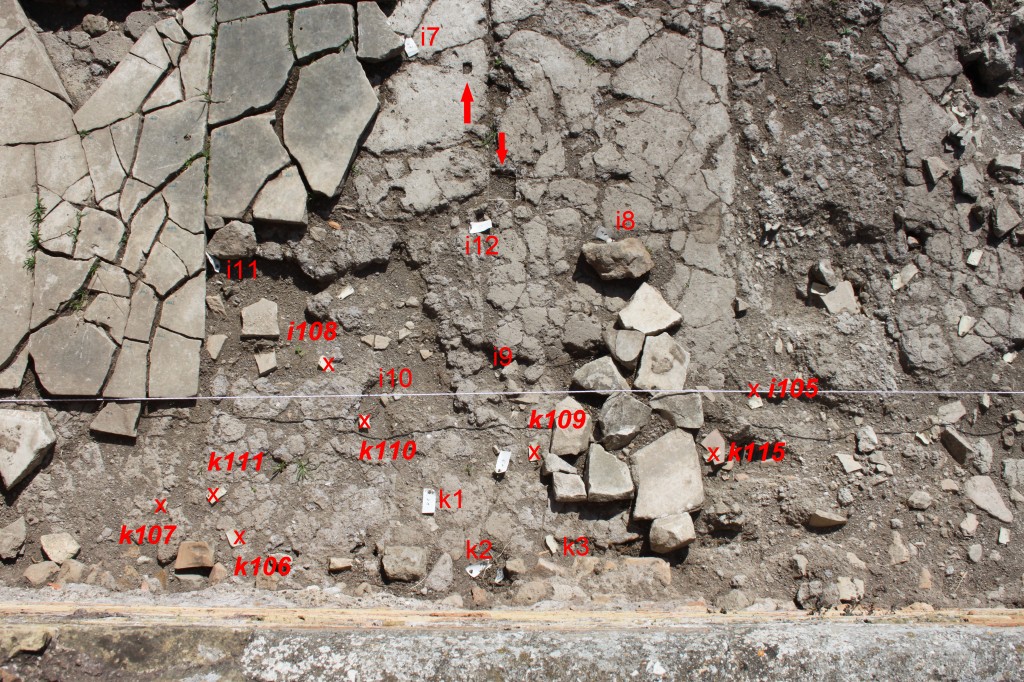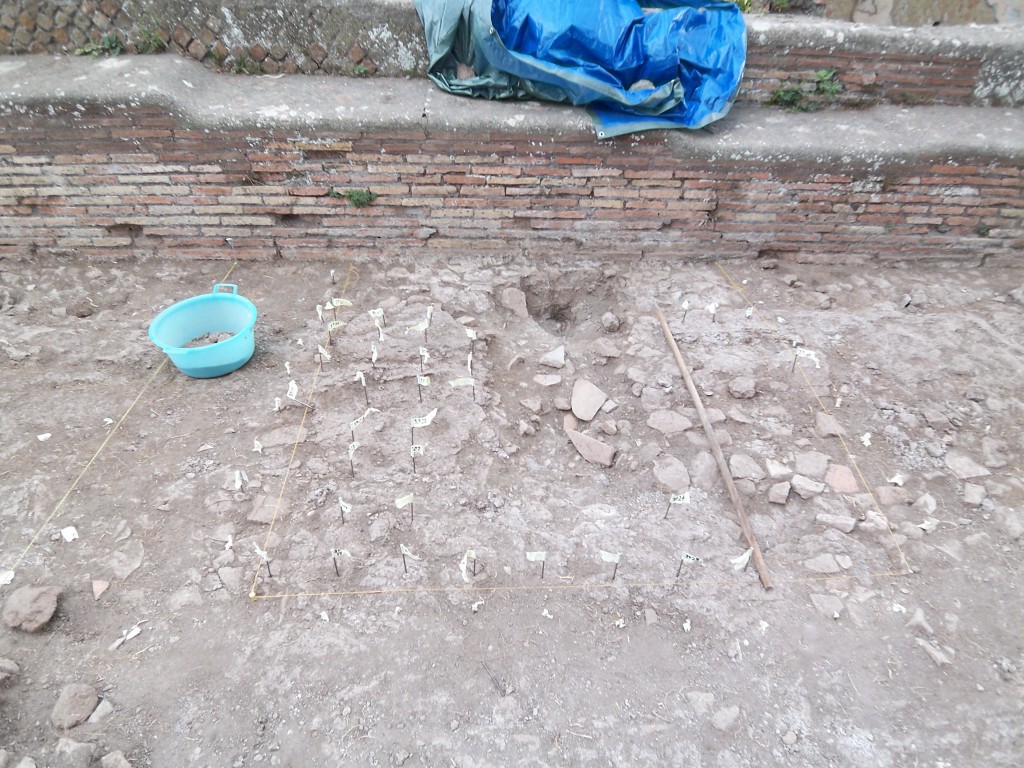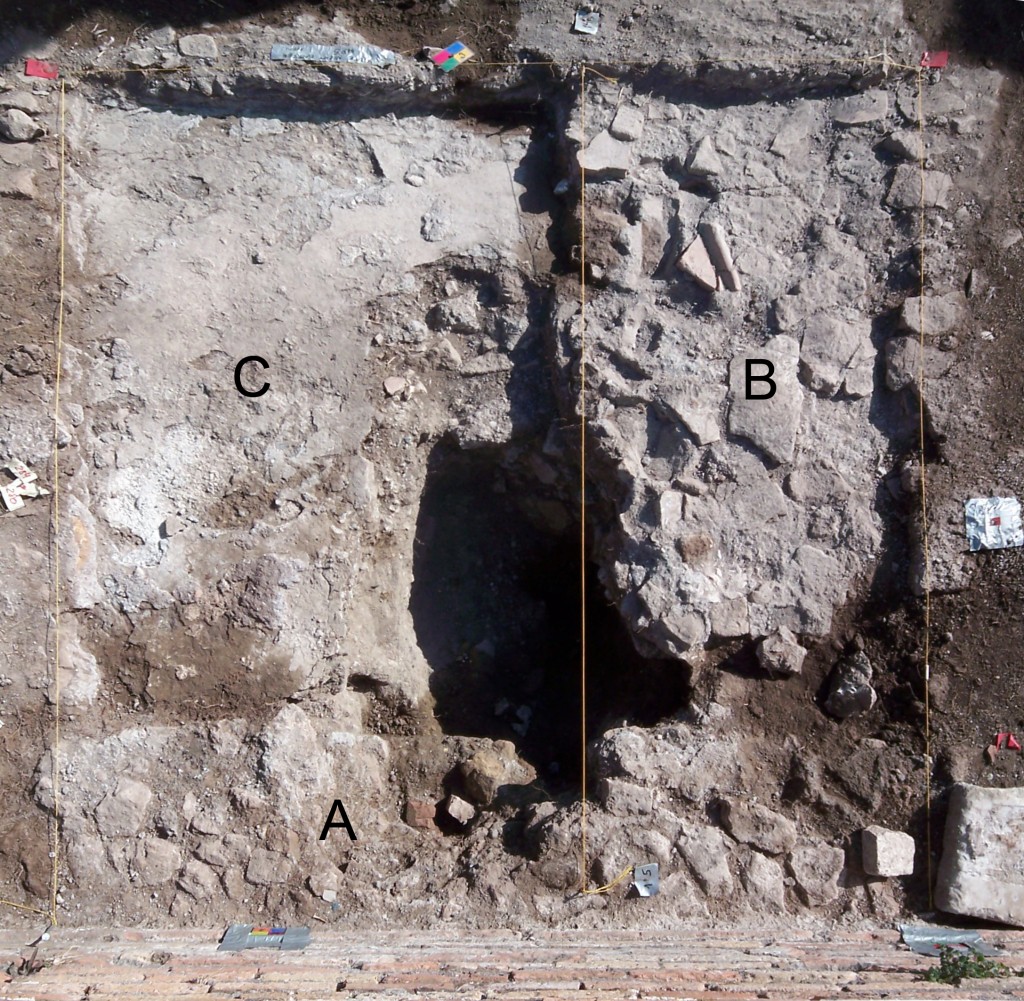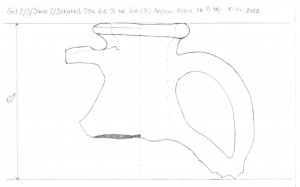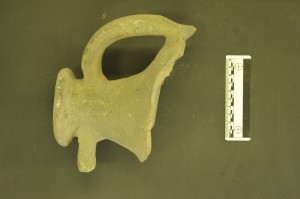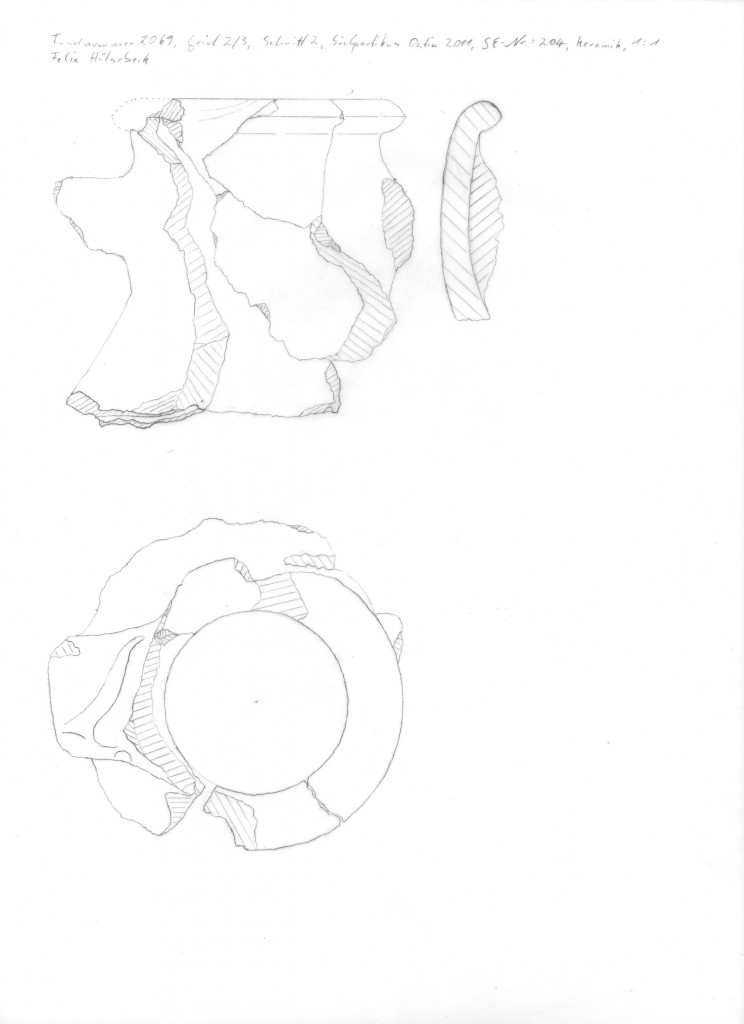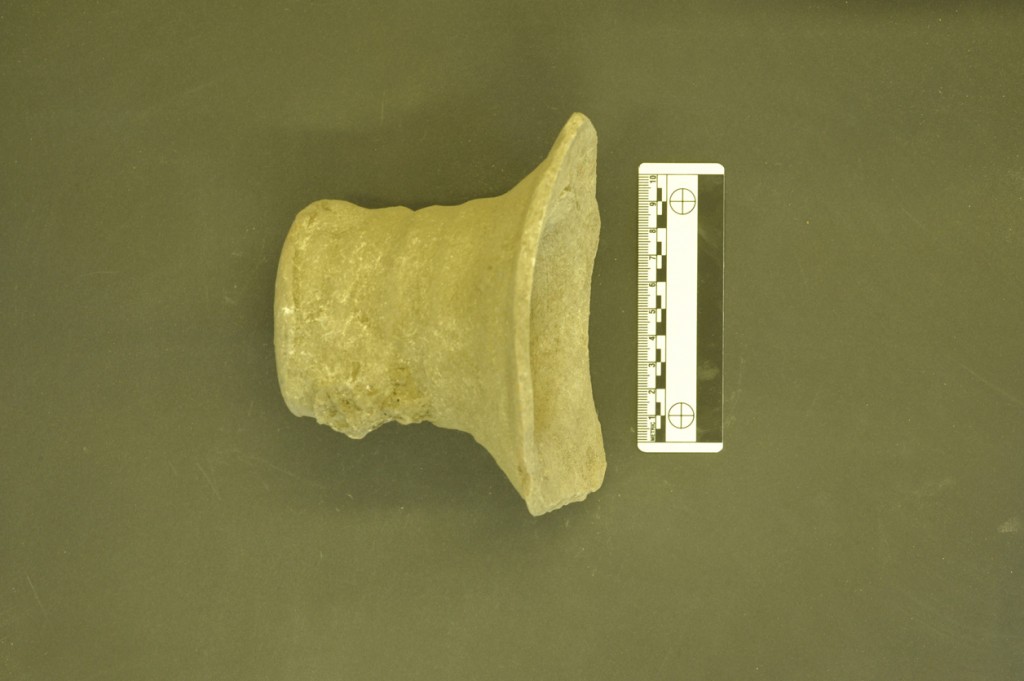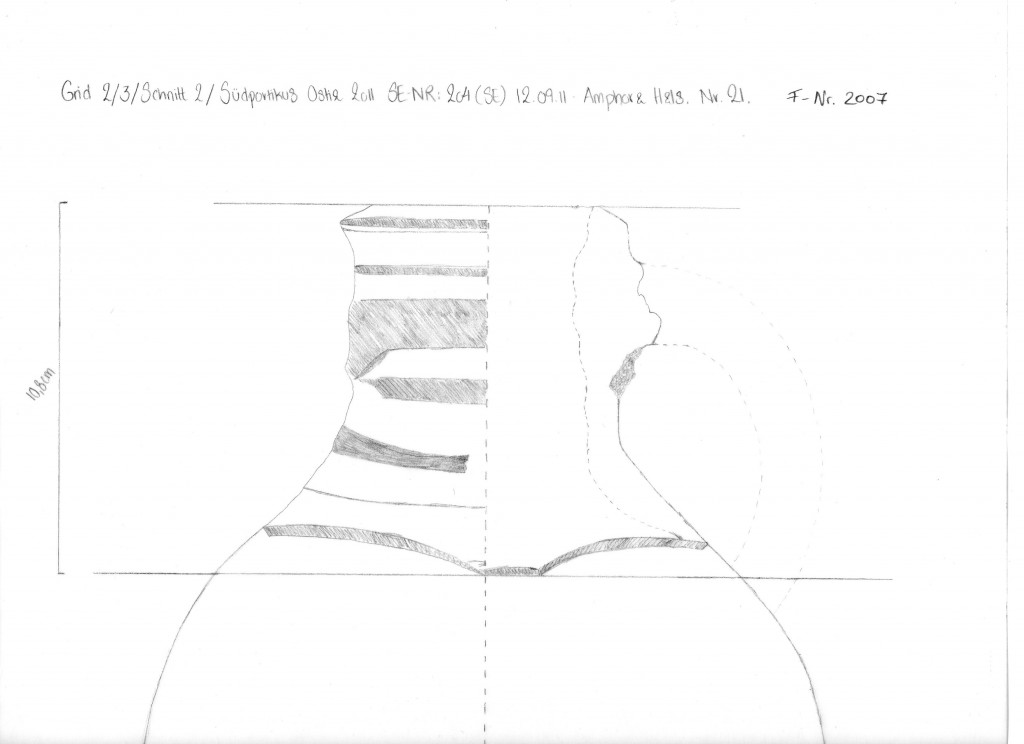Finds date their find-context. For any excavation it is fundamental to gain a chronology. Every find can help dating a building-phase, a filling, a construction pit, a collapse-catastrophe and robbing-activities a. s. o. However, dating is not the only key issue of finds, but still a very important one. At the same time the deposition of finds or their clusters can answer questions with a broader archeological, socio- or cultural-historic background too: What furniture did a public or private space have at a certain time? How was it decorated and how was decoration changed? Which functions of a room or open space can we reconstruct based on finds? How and when did the functions change? Who used the space? What was the interior of an average household? Why, where and when did the Romans dump their waste inside the city? What was recycled? What was found in a position where it surely could not have belonged and why? How did Ostians of different times deal with fire-collapses, natural or men-made disasters?
Before all these questions can be answered, it is necessary to document the context of a find as exact as possible (compare section “Aims and Methodology” and “Why do we use laserscans?“), and of course, to document the find itself: this can be done with fotography or even 3-D-documentation-techniques, but still one of the most important ways is the classic drawing by hand as well. This is done in black on transparent or white ground, so it can be digitalized or printed easily. You can see a few examples of hand-drawing below and at the end of this section.
Coins provide a terminus post quem for fills and layers they were found in. For archeological questions regarding building-phases, this can be of a main importance, but still, researchers like to know how long a phase of use could have been exactly, before a collapse had happened for example. For questions like this, ceramics help if they are analyzed and quantified in their full amount per layer. The result is a range from the earliest to the latest example, which contributes to the dating-possibilities and -limits of coins.
In our surface-excavations and cleanings all fragments of finds were recorded. Little cut-off pieces of marble or fragments of architectural elements provide informations about the working-process of recycling – a major key issue of this Ostia-Forum-Project. Even small parts of datable material like oil-lamps, plates, cups or architectural decorations are useful to understand the ways of how and when a level-raise could have happened or which monuments were already dismantled at a certain time. Household- and commercial-dumps are a mirror of many settlement-activities, trade- and supply-routes a. s. o. and recycled material like glass or metal can tell us where late production units were positioned.
And last but not least: Even small fragments of window-glass, roof tiles, architectural elements, coloured marbles or fragments of mortar with wall-painting and opus sectile can provide us with information of how to reconstruct the original outlook of a room or a monument in its surroundings (see pictures below).
For the chronology of building-activities in the high imperial period, brickstamps play a central role (see picture below).
Dices (see picture below) and game stones are frequently found in our Forum porticoes and maybe reflect the last uses of these buildings – that porticoes were an area for meeting people, and playing games is a phenomenon well known by late-antique depictions too.
Sometimes, the metal parts of wooden furniture survived in situ in areas close to the surface (see pictures below), but organic finds like wood were only preserved under extraordinary circumstances, for example when they were embedded in mortar (see third picture below).
Commercial ceramics like amphorae (see pictures below) can be a strong dating evidence, because they were found in high numbers in our excavations, which allow statistically representative conclusions.
